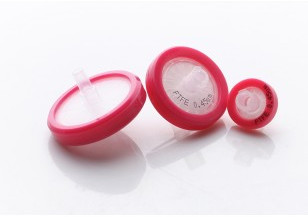A variety of materials are used for making the membrane filters. They include PTFE, CA, PVDF, Nylon, MCE, PES, and CN filters. Each of these has unique properties and specifications that make them suitable for various applications in biopharmaceutical industries and laboratories. They have a smooth micropore structure and surface. They can be used with syringe filters to ensure high loading capacity and superior flow rates in the filtration processes. Mainly, a membrane filter is used for differentiating the solid particles from a flat base. When choosing the right filter suitable for your applications, there are certain factors that must be considered. They include:
1. The Pore Size:
Always select the pore size according to the specific requirements of each process. For example, you can choose a pore size of 0.2-micron for filtration of bacteria having a similar or larger size. To determine the pore size rating of this filter, you can use the bubble point test method that determines the path of minimum resistance for a bubble that passes through a wet membrane.
2. The Sample to be Filtered:
This consideration is important for making a selection between hydrophilic and hydrophobic membrane. Usually, the hydrophilic membranes are used in applications where the medium has to pass through the membrane. In this process, the particles and contaminants are removed from the sample. The hydrophobic filters are a preferred choice for venting applications that involve high surface energy fluids. In these samples, it is necessary to remove the air from the stream of the sample fluid. These filters repel a variety of fluids except alcohols and oils.
3. The Polymer:
The selection of membrane polymer should be done on the basis of unique requirements of the sample to be filtered. For instance, you can choose PVDF polymer for the filtration of samples that require protein as a filtrate. You should also select the polymer for membrane filter after checking its compatibility with the housing polymer to ensure higher efficiency in different processes.
4. The Porosity:
The selection of porosity and flow rate is done according to the pore size of the filter. The pore size can directly affect the flow times of the filters. A smaller pore size provides slower flow of the samples. Hence, the proper porosity needs high pressure to pass the sample smoothly through the filter.
5. Additional Support:
It is advisable to check if the filter requires any additional support for effective purification or filtration. A backing device is needed in the applications where membranes standalone without any support. The selection of support is made according to the polymeric structure of a membrane.
There are many other factors as well that you should consider for making the right selection of a syringe filter with a suitable membrane.


